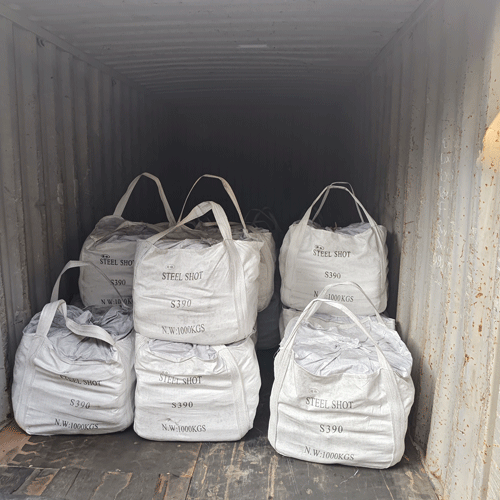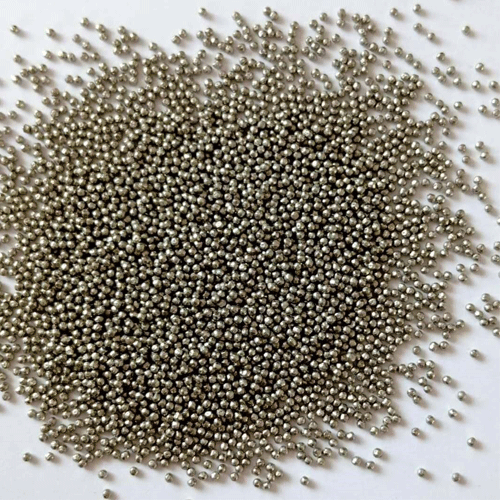Before the steel pipe is sprayed (thrown), the steel pipe is cleaned to remove the grease and fouling on the surface of the steel pipe, and the pipe body is preheated to 40-60 °C by a heating furnace to keep the surface of the steel pipe in a dry state. During the spraying (throwing) treatment, since the surface of the steel pipe does not contain grease and other dirt, the effect of rust removal of the steel pipe can be enhanced. The surface of the steel pipe is clean. Instructions for the operation of the shot blasting machine The operator must pay attention to whether the display of the electric cabinet instrument is normal during the operation and cleaning of the equipment. 1. All personnel entering the shot blasting room must wear goggles and safety helmets. 2. The operator must check the equipment every day. These include: lubrication part and mechanical part. Lubrication parts such as: reducer, hydraulic, lubricator and bearing chain. Mechanical parts such as: wear of rotating parts and wear of wearing parts. Example: If the shot blasting machine vibrates, it must be stopped immediately to replace the blades.
Register wear and tear every day, and replace wearing parts in time. 3. The lubrication part should ensure timely refueling. 4. The directional sleeve must be adjusted and replaced in time. 5. Check whether the amount of steel shot is sufficient every day. Shot blasting machine installation skills All shot blasting machines must comply with the following rules during the installation process: 1. The main engine is in place: when the main engine is in place, its levelness and weight must meet the requirements of the drawing. 2. The installation of sub-components should be carried out from bottom to top. 3. The rail type or catenary type and roller type should be from the inside of the equipment to the periphery. 4. During the test run, part of the pre-test should be carried out first, and then the whole operation should be carried out after normal operation.
Shot blasting machine usage skills 1. During the shot blasting cleaning process, as many workpieces as possible should be placed in the projectile area, which can not only improve the cleaning efficiency but also reduce the wear of the guard plate and increase its service life. 2. In the case that the workpiece cannot be increased, the directional sleeve should be adjusted so that the projected steel shot can be projected on the workpiece as much as possible, which can also increase the life of the guard plate and reduce its wear. 3. ① The dust removal system should adjust the gates around the branch pipe to make the wind distribution reasonable, which can enhance the dust removal effect. ② The dust collector should ensure regular cleaning. The maintenance equipment of shot blasting machine equipment must be maintained in strict accordance with the necessary maintenance procedures of its foundry machinery when it is put into production after installation and commissioning.
1. All oil filling points of the equipment must be regularly filled with oil, lubricating oil or grease according to the requirements of their parts. 2. The seals (wearing parts) must be inspected every day, and replaced immediately if damaged. 3. Check the chamber body guard plate every day, if it is damaged, it should be replaced immediately. 4. Check the shot blasting device guard plate, blade, impeller, directional sleeve and pellet wheel twice every shift, and replace it immediately if damaged. 5. The electrical system should be checked twice. 6. All transmission parts are checked twice a week.
7. The operator should check the cleaning effect at any time. If there is any abnormality, the machine should be stopped immediately and the equipment should be checked as a whole. The coating process of the car coating production line can generally be divided into two parts: one is the surface treatment of the metal before coating, also called pre-treatment skills; the other is the construction process of the coating. Surface treatment mainly includes the removal of oil, dust, rust on the surface of the workpiece, and the removal of the old paint layer during repairing operations, so as to improve the surface condition of the workpiece. This includes machining and chemical treatments of workpiece surfaces, such as phosphating, oxidizing and passivating, depending on the specific conditions.
The anti-rust coating process of construction machinery can generally be divided into pre-coating surface treatment process and anti-rust primer coating process. Surface treatment is one of the important processes in anti-rust coating. The quality of anti-rust coating of construction machinery depends to a large extent on the method of surface treatment. According to the introduction of British Imperial Chemical Company, the coating life is limited by three factors: surface treatment, accounting for 60%; coating construction, accounting for 25%; coating quality, accounting for 15%. Construction machinery industry, surface treatment methods of different parts. Mechanical finishing can effectively remove rust, welding slag and oxide scale on the workpiece, eliminate welding stress, increase the bonding force between the anti-rust coating and the metal substrate, and then greatly improve the anti-rust quality of construction machinery parts. The mechanical finishing standard requires a Sa2.5 level.
The surface roughness should reach 1/3 of the thickness of the anti-rust coating. The steel shot used for blasting and shot blasting should meet the requirements of GB6484. The surface treatment of sheet stamping parts is generally called chemical surface treatment. The process flow is: pre-degreasing → degreasing → hot water washing → cold water washing → pickling → cold water washing → neutralization → cold water washing → surface adjustment → phosphating → cold water washing → hot water washing → pure water washing → drying The above process can also be based on the sheet The oil and rust conditions of the stamping parts should be properly adjusted, or the pickling process or the pre-degreasing process is not necessary. Degreasing and phosphating are the key processes in the chemical treatment process, and these two processes directly affect the quality of the chemical treatment of the workpiece and the quality of the anti-rust coating. Relevant process parameters and related auxiliary equipment are also factors that cannot be ignored that affect the quality of surface treatment. Because of the wide scale, many specifications, heavy machine and large parts of construction machinery, the spraying method is generally used for painting. Spraying tools include air spray, high-pressure airless spray, air-assisted spray and portable electrostatic spray.
The air spraying power is low (about 30%), and the high-pressure airless spraying wastes the paint. Both of them are characterized by severe environmental pollution, so they have been and are being replaced by air-assisted spraying and portable electrostatic spraying.
 5 major techniques for making steel shot
5 major techniques for making steel shot
 The secret process of sand blasting and rust removal surface treatment
The secret process of sand blasting and rust removal surface treatment
 Configuration of different abrasives during spray rust removal
Configuration of different abrasives during spray rust removal
 Understand the complete metal surface shot peening process in one article
Understand the complete metal surface shot peening process in one article